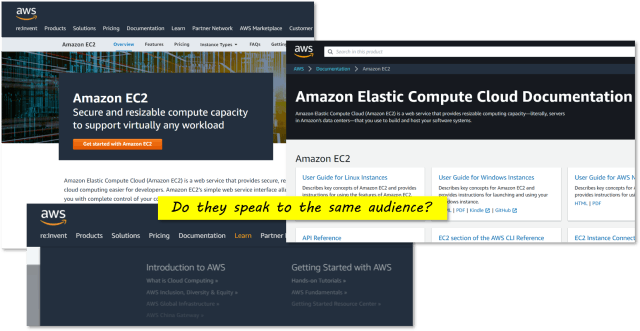A brief discussion: Copywriting, Technical writing, UX writing, and product experience

Photo by fauxels from Pexels
Have you ever wondered about the various types of writings, or what exactly that guy/gal with a title of “some writer” is doing?
Traditionally in the job market there are two categories of writing positions: copywriting and technical writing. Not long ago there entered a new one: UX writing. But what’s the difference? And what is the implication to the profession of writing and to the business world in general?
This post attempts to explore the roles different types of writings play in product experience. It is also a continuation of the previous Lean Writer.
Which writing?#
Let’s start with the basics.
Wikipedia defines Copywriting as “the act or occupation of writing text for the purpose of advertising or other forms of marketing”, while Technical writing as “writing or drafting technical communication used in technical and occupational fields”.
At the time of writing (no pun intended), UX writing hasn’t made its entry to Wikipedia yet. Nevertheless, there is consensus: UX writing is writing the microcopy in digital products (e.g., mobile apps, websites) to help users navigate the product.

Simple, right? Before going into more detail, we’ll first have a look at the receiving end, the audience.
Who is the reader?#
The American novelist John Cheever famously said “I can’t write without a reader. It’s precisely like a kiss – you can’t do it alone.”
Well, I guess he doesn’t count diaries. But to understand the essence of different writings, we do need to know the audience and their motivations and priorities (known as psychographic segmentation in marketing research).
From the definition of the three types of writings, it might seem obvious.
First of all, a product needs to let people know its existence and why it exists, often framed as the value it could bring. This is the job of copywriting. It talks to those who are looking for a solution to whatever problem they may have. A marketing copy is often the first impression a product gives to potential customers.
Sooner or later a customer will want or need more concrete information. If still in the buying process, a customer might ask for product specifications or a datasheet. If the procurement is already completed, the engineers at the customer side might need technical information for deployment or integration, this is especially true in the B2B world or for enterprise software.
Finally, the product is ready for real consumers, or end users. It’s safe to say the only thing that concerns an end consumer is usability, whether the product is easy to use. That’s what UX writing is supposed to deal with.

What does it take?#
You may have realized that the three writings serve different purposes. To understand the knowledge and skills required for each writing, a good starting point is the job market. Search open positions for copywriter, technical writer, and UX writer, you’ll get some ideas quickly.
Copywriting is in the domain of marketing. SEO, analysis, and journalism are often on the we-expect-these-from-you list. How to know whether a piece of copywriting is good? See whether it can sell an idea and/or persuade people to act. No wonder the most important element in copywriting is a call to action.
Technical writing belongs to the engineering world. Being part of product deliverables, technical documentation needs to be accurate and objective. Technical aptitude is important for a writer to succeed in this position.
UX writing focuses on interaction and usability, and is responsible for fostering an engaging relationship between a product and its users. UX writing often falls into the design branch and requires UX research skills.
Where the line blurs#
The high-tech industry is blooming, and the competition is fierce. Whether aiming to attract technology enthusiasts to ignite an early market, or to appeal to more pragmatic minds in the mainstream market, no enterprise can afford to overlook the importance of delivering the right message to the right audience in the right context.
But, just as the products/services are evolving, the audience is diverging.

I was first introduced to the concepts of “docs-as-code” and developer portal when looking for an API documentation solution a few years ago. The focus there is Developer Experience or DX. Similar to most technical documentation, a developer portal is often a standalone website, due to the fact that they usually have their own content creation tools and publication process.
With more enterprises embracing design thinking or customer-centric methodology, UX writing is brought to the fore as a component of User Experience. In contrast to technical writing, the output of UX writing lives inside the product, sometimes called in-product content.
The question is, to what extend does such a differentiation make sense? Is it just a matter of job titles, or is it the harbinger of more profound changes in the making? Think about low-code development platforms.
Build a cohesive product experience#
Experience in the high-tech industry is multifaceted. As we have discussed in this article, copywriting is about brand awareness and industry leadership, tech writing is more on the side of technical expertise and in-depth knowledge, while UX writing leans toward web usability. Together they form the overall product experience.
How to build a cohesive product experience, from engaging potential customers, increasing development velocity, to delighting end consumers? Never mind your writers may be scattered in different functional departments.
This is a topic we are going to see more and more in content strategy and product development discussions, as there is quite a lot to explore and experiment. What do you think?